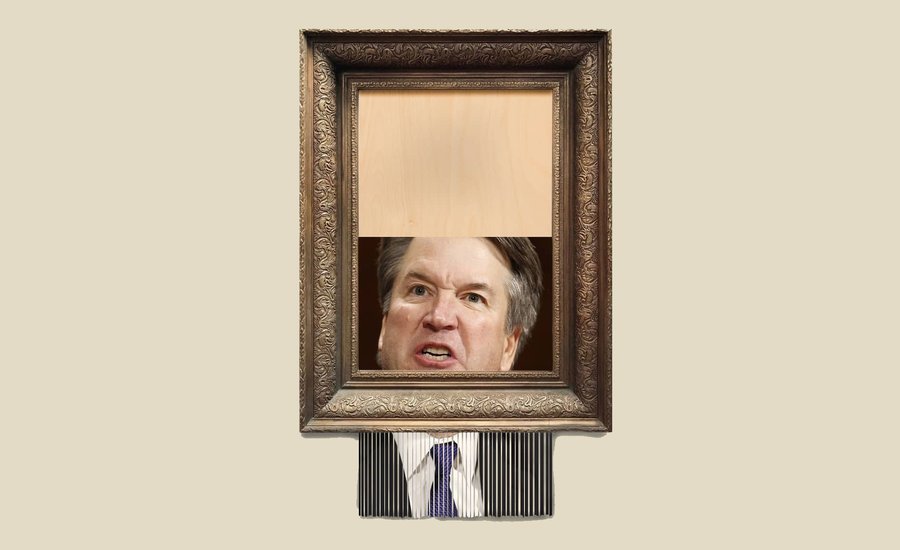It’s weird that the Kavanaugh stuff and the Banksy stuff happened on the same day. That is: this past Friday, Senator Susan Collins announced in a strangely long (forty-five minute!) speech that she would vote for Judge Brett Kavanaugh, guaranteeing a sufficient majority to propel him into the Supreme Court. Also on Friday, Sotheby's auctioned off Banksy’s Girl With a Balloon, voted Britain’s “best-loved” artwork in a 2017 poll, for a record price of $1.4 million dollars; the print destroyed itself via a frame-embedded shredder as soon as it was sold.
Since “then,” or however time moves on the internet, the Banksy shredding-piece has transformed itself into a meme-template for, as the Washington Post reported, everything that people think should or has been shredded: the Constitution, potatoes for french fries, Brett Kavanaugh’s reputation. A “Banksy Shredder” website allows you to input any image into a frame so that you, too, can watch it shred into thin, virtual strips. In case you missed the take cycle, a brief summary:
- That Sotheby’s was in on it
- That they weren’t (jokes on them, haha)
- That Banksy shred the piece to increase its value
- That he didn’t––shredding it was a jab at the random, inflated “value” exchange in the art market
As the discourse ground itself down, Judge Brett Kavanaugh was confirmed to the Supreme Court on Sunday, despite testimony by Dr. Christine Blasey Ford that he had sexually assaulted her when they were in high school. He now sits alongside Supreme Court Justice Clarence Thomas, accused of sexual harassment by Anita Hill.
If you think that Banksy and Sotheby’s colluded for a value-inflating prank, perhaps you might also find parallels to the Kavanaugh confirmation, arguing that, in both cases, very powerful cis men acted with impunity. Impunity, or the ability to commit crimes without being punished, is a means to an end (of, for instance, getting a Supreme Court seat), but it’s also an end in and of itself. The state wields impunity to discourage rebellion; it’s difficult to combat an enemy who, as they’ve just shown you, is exempt from the law. Impunity is also usually deployed by cis, usually white, men. Banksy is a “man of mystery,” which means, of course, that he is a man. If he weren’t, his “pranks” would seem a lot less “edgy.” They might not even be “edgy” (transgressive, interesting, worthwhile) at all, but instead perceived as attention-seeking stunts worth penalizing.
If you think that Banksy was pranking both Sotheby’s and the art market, and if you’re against the latter two, then you might find yourself grudgingly endorsing an artist who has become a stand-in for commodified critique. Banksy’s images are flat, often monochrome, and decontextualized. As critic Ben Davis pointed out in a recent piece, they’re street art tags whose power depends on placement (e.g. a floating girl holding balloons stenciled onto the Israel/Palestine wall). But divorced from their original contexts, these images go viral for often opposing causes. A girl holding balloons could appeal to anti-Zionists, but could just as easily get picked up by Israel stans, fast fashion designers, climate justice activists, whatever. And yet the prank on Sotheby’s also “worked.”
Whichever lost social contract the Banksy/Kanvanaugh coincidence symbolizes—-and whether or not that social contract existed in the first place—two things are true: that Kavanaugh is a Supreme Court judge, and that, as Twitter user @jil_slander pointed out, there’s now no need to “spend millions of dollars on a Banksy piece.... just print it out at the library” (and shred it).
RELATED ARTICLES:
The Man Who Stole Banksy—Watch the Trailer
How Does Banksy Make Money? (Or, A Quick Lesson in Art Market Economics)



























